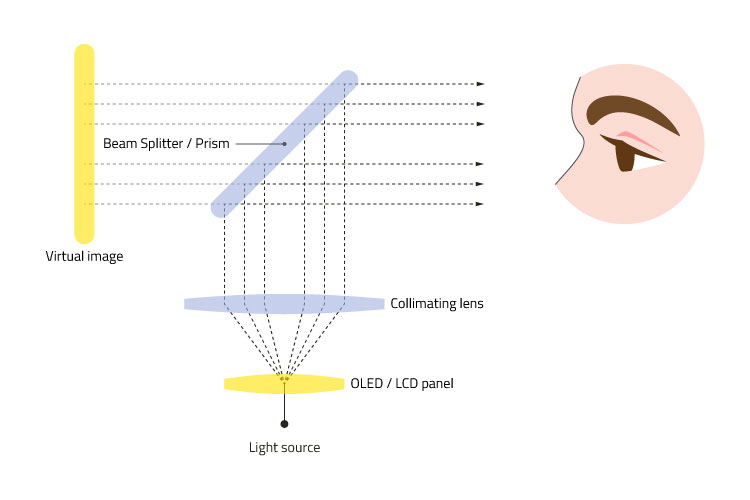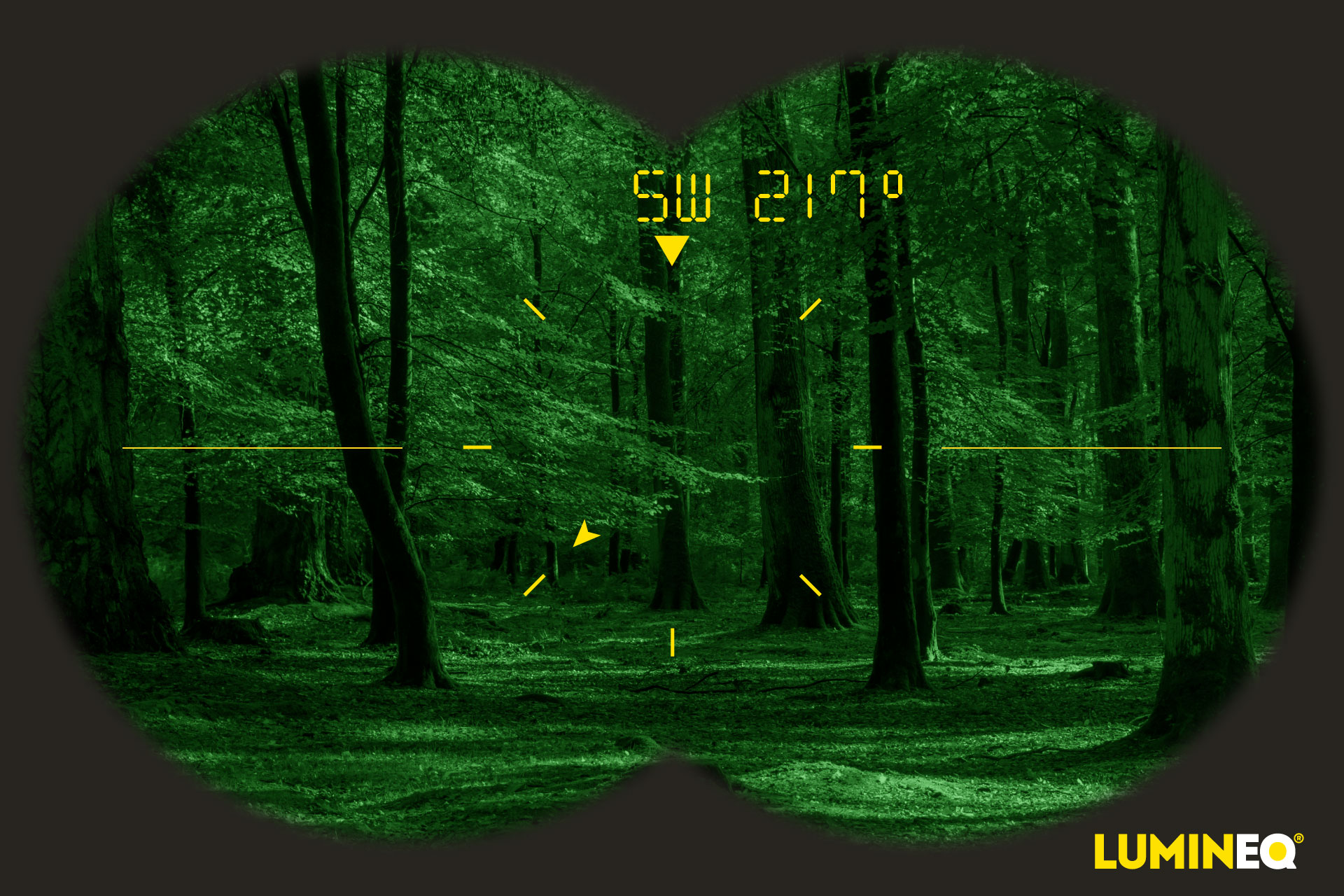Like many mission-critical operations, law enforcement tactical operations often take place at night. Night Vision technologies have many uses in a variety of law enforcement operations including aviation applications. For example, it can be used to find people in the dark or for pilots operating an aircraft or helicopter. It’s also helpful for navigation and surveillance during the night when it is dark. Night Vision can also be used for hunting purposes and watching animals after dark. Adding a display to optical devices enables the user to make informed decisions based on the digital information displayed.
Night Vision technology is mainly used in goggles and headsets. These are usually worn on the heads of tactical officers and attached with a head harness or helmet mount.
Augmented reality (AR) in optical devices is achieved by overlaying digital information to the line of sight. The AR is enabled with a display overlay on the Night Vision goggles lens system showing mission-critical information, such as heading, speed, attitude, location and distance to the target. This digital information is crucial for making an informed decision.
A Night vision device based on image intensification is an optical device that takes available light and amplifies it. This makes surroundings easier to see, even on the darkest nights.
Night Vision devices are used in several applications, including:
Competing technologies
Currently there is no other rugged display technology that is placed straight to the optical path of optical devices. Competing technologies like OLED and LCD displays are placed outside of the optical path, needing complex and delicate optics to project the image to the line of sight. Typically, these technologies and the beam splitters and prisms used introduce light scattering and glare within the optical path that weakens the displayed image, hence the critical information displayed.
 Visualization of competing display technology in Night Vision devices
Visualization of competing display technology in Night Vision devices
The materials used in OLEDs and LCDs are affected by the environment, they're sensitive to moisture, sunlight, heat and cold. These are important features of a display in Night Vision devices, especially for mission critical operations, which can take place in extreme weather conditions. OLED and LCD displays also require additional space within the optical device, which is not always possible since the device is already optimized to be a certain size.
OLEDs and LCDs are ideal for consumer devices like mobile phones, as consumers are likely to change these regularly. OLED displays are not the ideal fit for mission critical applications, where the lifetime of the display can be a critical driver.LUMINEQ display Technology for Night Vision Devices
LUMINEQ innovated last year a Technology Demonstator for Optical devices, engineered to demonstrate and help manufacturers evaluate the unique capabilities of LUMINEQ transparent displays for Optical devices.
Compared to transparent OLED (TOLED) and other display technologies, the performance of our displays is on a different level with a glass-like transparency of 90%. One can always see through the lens system, even if you’re running low on battery or the display is not in use. Additionally the ruggedness and capability of a wide display brightness range makes the LUMINEQ display technology a perfect fit for night-vision devices like goggles and optical/observation devices using image intensification.
The main benefit of the LUMINEQ technology for Night-Vision applications is that the display is actually placed in the line-of-sight. And more importantly the uniform display glass can be placed to the line of sight covering the whole optical path meaning that light pollution, glare or light scattering can be minimized, and hence achieve the best possible night vision image. This also enables the user to focus on their mission and get the critical information for an informed decisions.
.jpg?width=600&name=transparent_market_infographic_LDI_Lens-Black-3x2-2020-v01-2(1).jpg) LUMINEQ technology in the line of sight
LUMINEQ technology in the line of sight
The color used in Night Vision devices is usually green. The LUMINEQ yellow is perfect color for these kind of applications, since yellow provides a good contrast with the green background. Another benefit with our technology is that it does not require a lot of space from the optical path, Night Vision goggles are already extremely small and compact and do not have extra space for additional optics.
LUMINEQ technology for Night Vision devices main benefits:
-
Wide display brightness range that can be adjusted to match the image intensification
- Optical uniformity achieved with one unified TASEL glass on the optical path
- LUMINEQ yellow color contrast perfectly with green and white colors of the night-vision device
- Uniquely high transparency, fully customizable and the most durable display on the market
- Space saving compared to Prism type solutions
- Digital information in the line of sight to make an informed decision
LUMINEQ displays are inorganic, solid state displays made for robust environments. They endure drastic temperatures, humidity, shock, and vibrations. The operating temperature is from -100°C to 105°C and the temperature doesn’t affect the lifetime or response time. The displays need neither heater nor cooler.
All LUMINEQ displays are fully customizable, do not hesitate to contact us if you wish to get more information about our Optical products.


